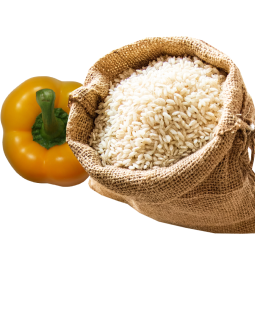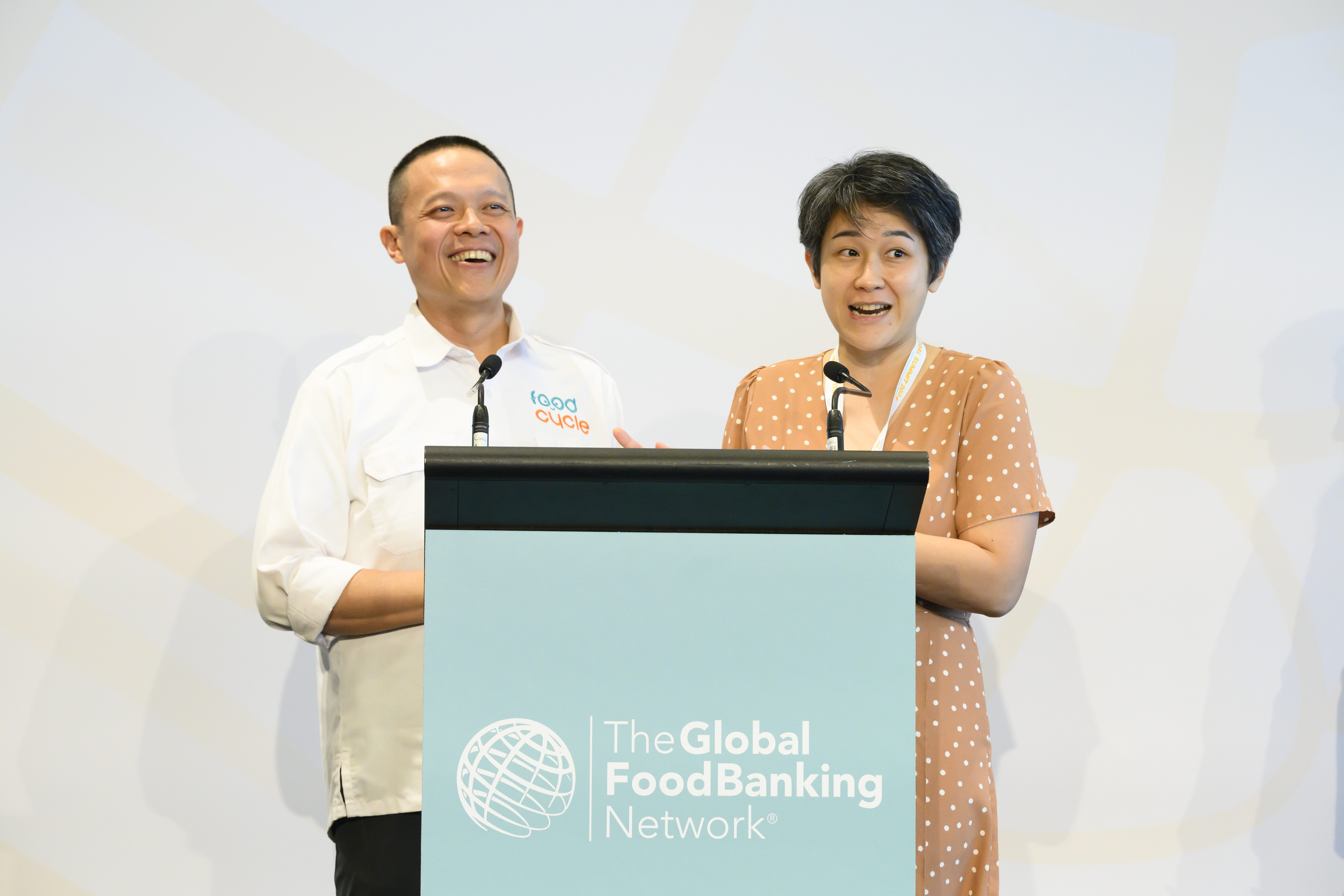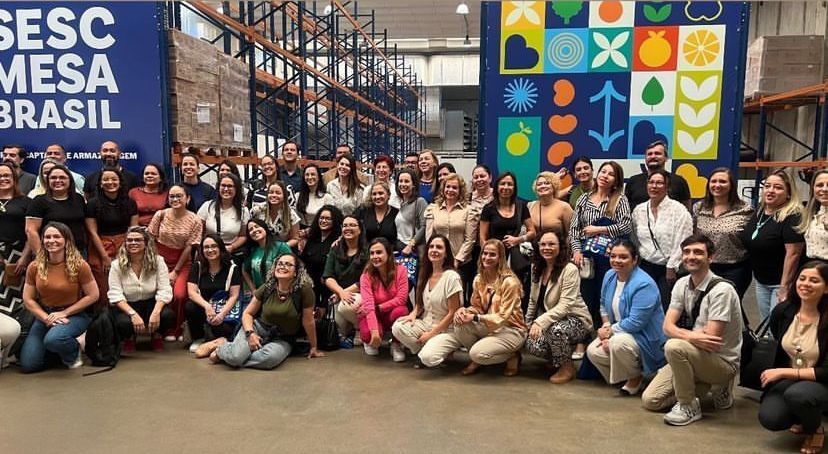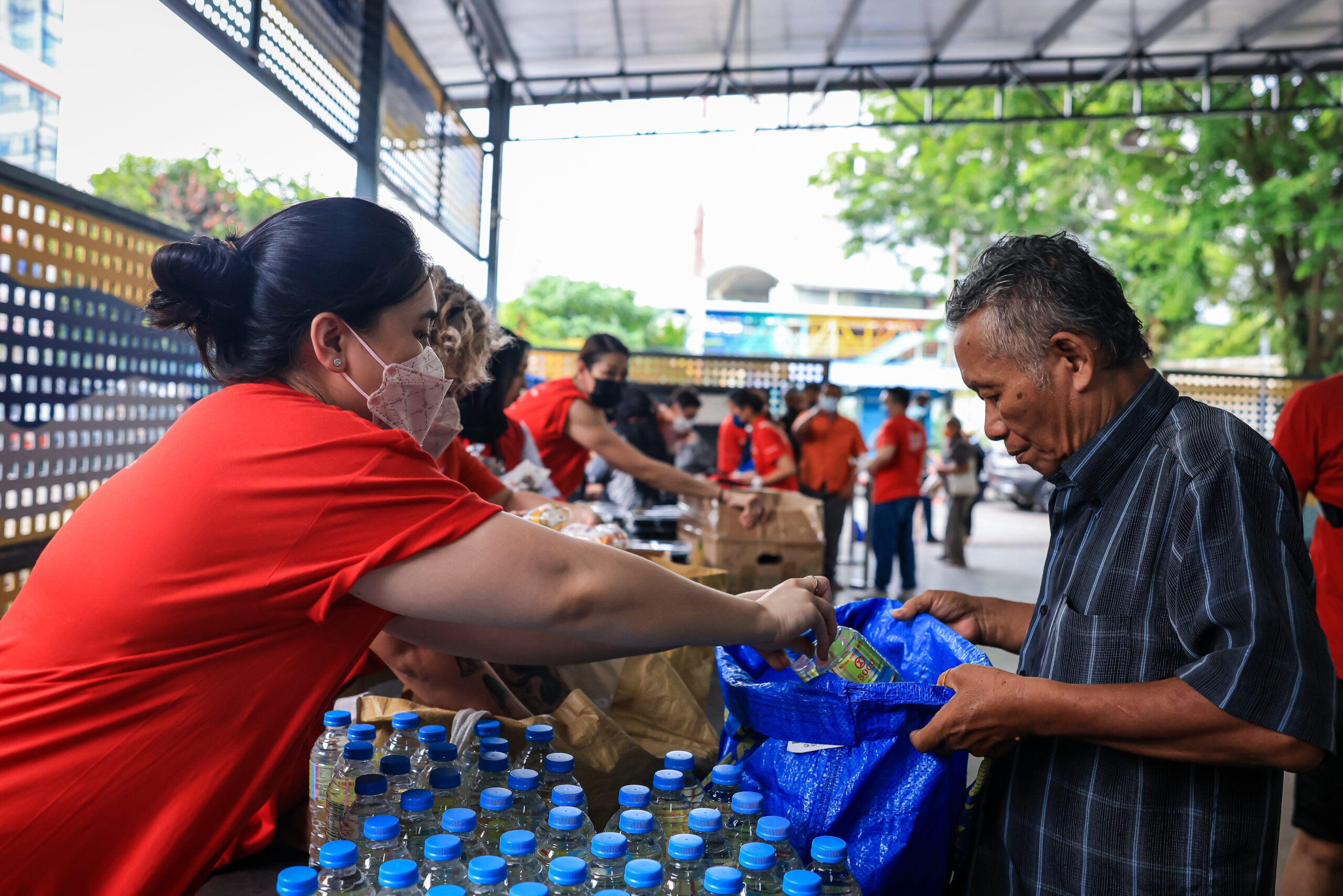Written by Micaela Wu, who served on GFN’s communications team from 2021-2024.
When a research study found that about half the excess produce at one of the largest agricultural trading posts in the Philippines was going to waste, a local food bank was ready to rise to the challenge.
Although it’s a seven-hour drive to Nueva Vizcaya from metro Manila, Rise Against Hunger Philippines (RAHP) soon found themselves making regular visits to Nueva Vizcaya Agricultural Terminal (NVAT), where thousands of farmers go daily to sell the produce that supplies much of the mainland’s major markets. With an opportunity to recover produce at this critical point of the food supply chain, RAHP developed a unique program that gives farmers a hand while bolstering the nutrition and food security of local communities: a food bank where farmers can trade in their surplus produce in exchange for shelf-stable goods and essential supplies.
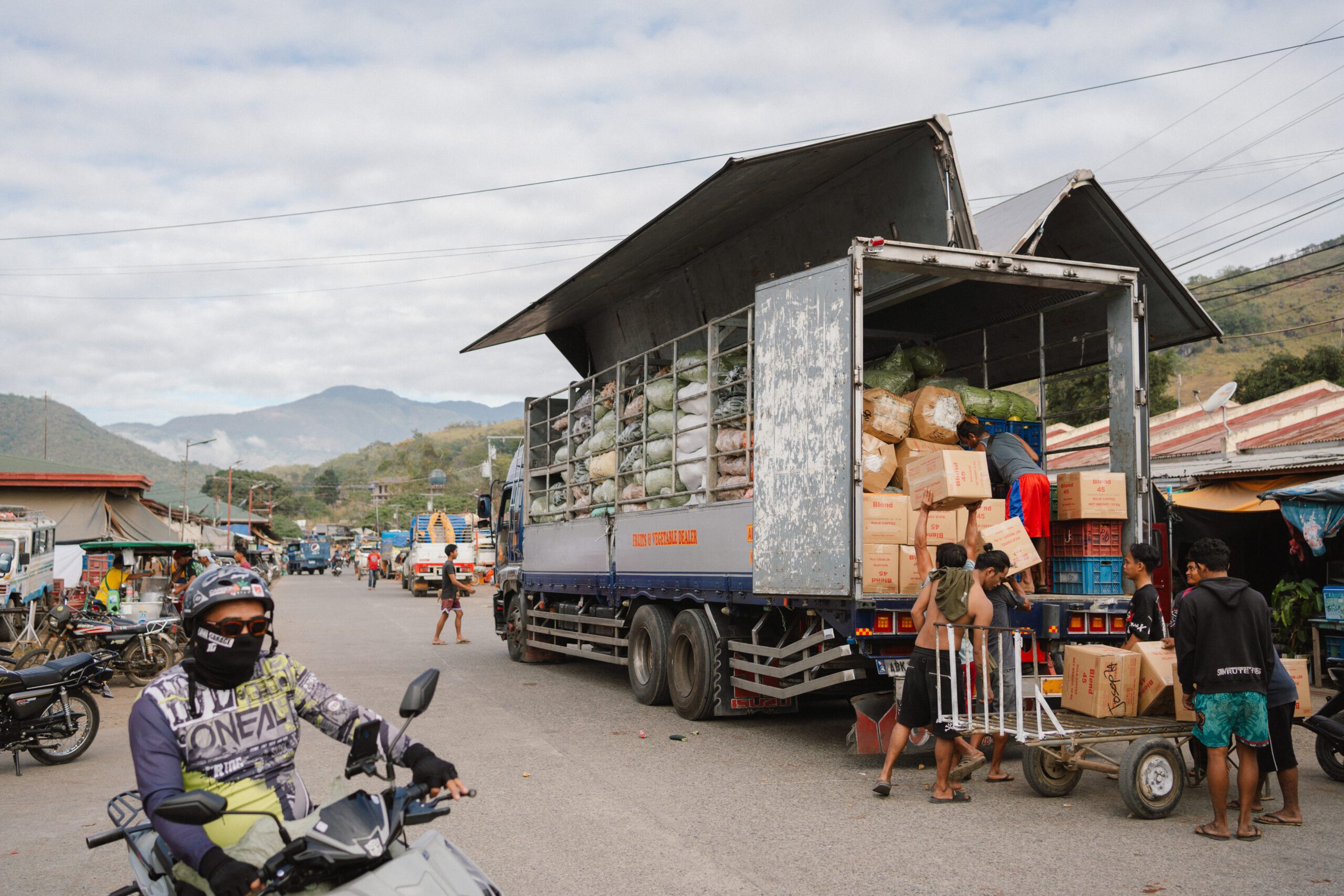
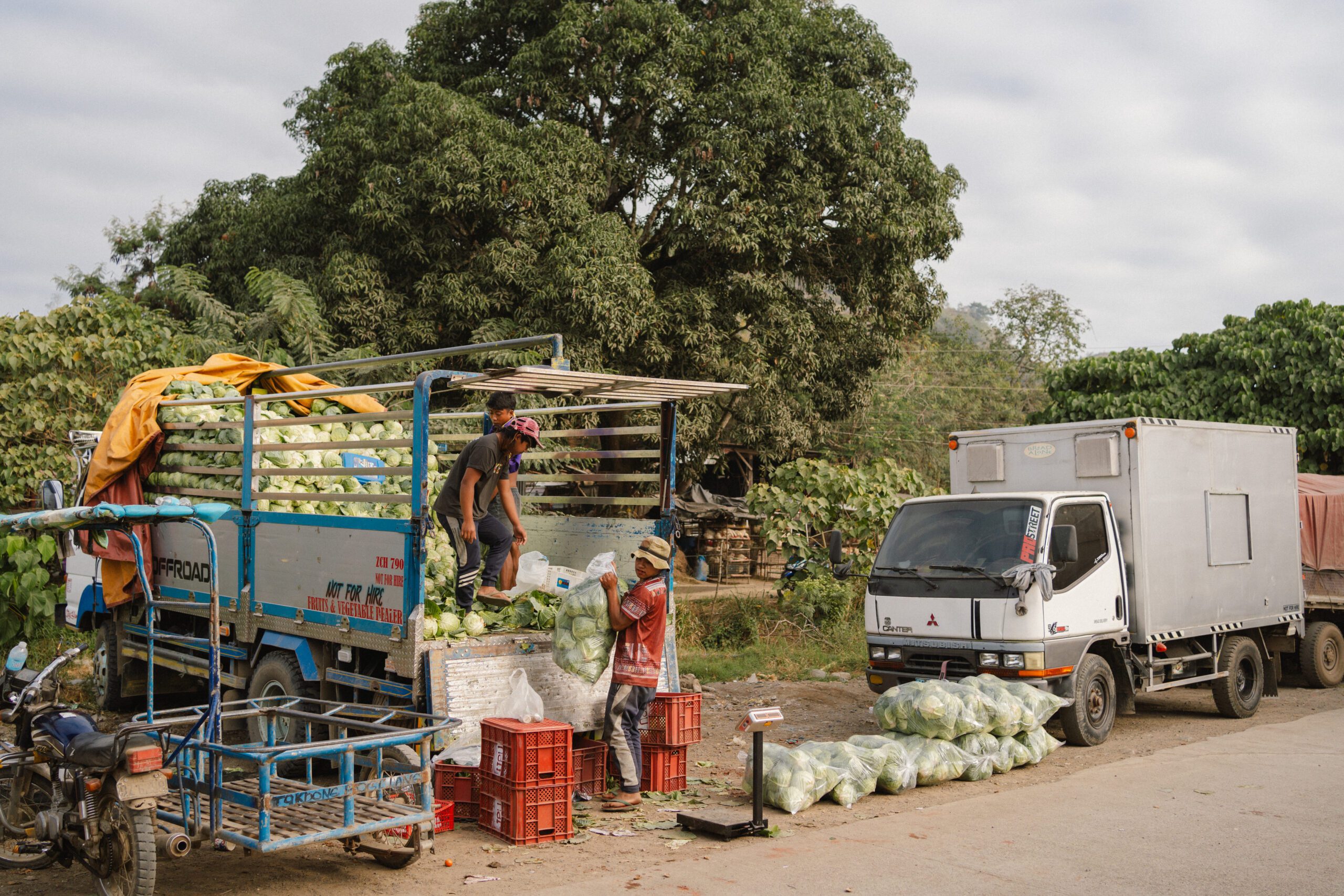
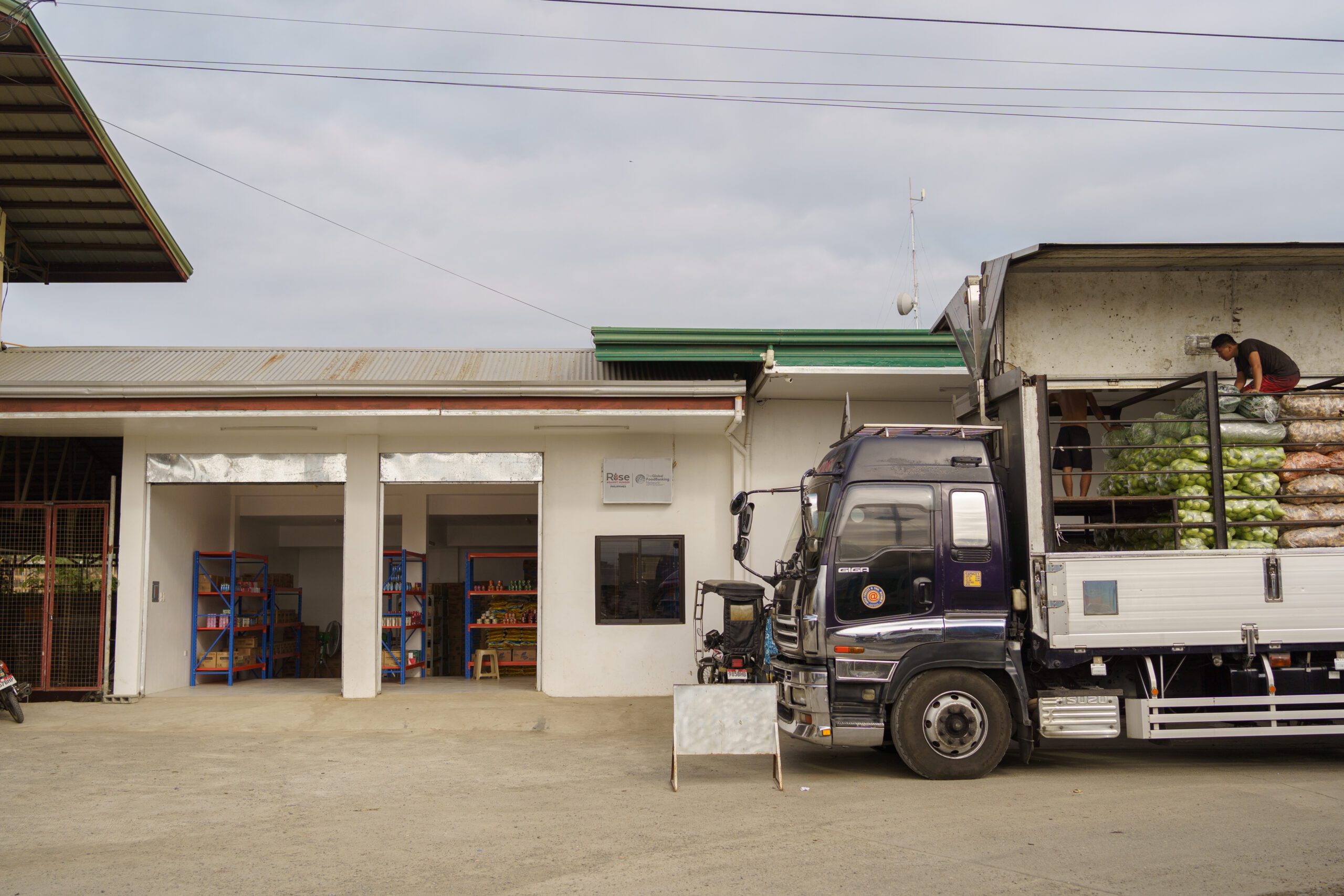
Inside the gates of the terminal, food is in abundance. From sunrise to well past sundown, men unload vehicle after vehicle full of cabbages, crates of cauliflower, and huge plastic sacks full of gourds, ginger, and long beans, perfectly arranged. But a significant amount of the produce farmers bring does not get sold, meaning that food does not make it to retail markets, nor end up on people’s plates. Sometimes, fruits and vegetables can’t be sold because of cosmetic imperfections, like not being the right size or color, or if it has imperfections like insect bites or blemishes accrued during handling. But, despite how perfect much of the produce looks, the aesthetic appeal and uniformity of the product doesn’t always guarantee that it will be purchased by a buyer . If everyone is trying to sell tomatoes, for example, it might be difficult to sell everything if a farmer has a huge supply. Additionally, the price that buyers will offer in times of bounty will be low, so it might not even be worth for farmers to pay for transportation to the market in the first place. All these cases have traditionally led to wasted food.
Rodolfo Eugenio Valdez has been working at NVAT since 2010 as a trader and grows crops on the side. When asked how often how often he’s had to throw away produce in the past, he said, “When business is slow, some of it,” in his local dialect, Ilocano. Gesturing to the sacks of chayote, cabbage, and cauliflower in this tricycle, he added, “Because when prices are cheap and there’s over supply, we can hardly sell.”
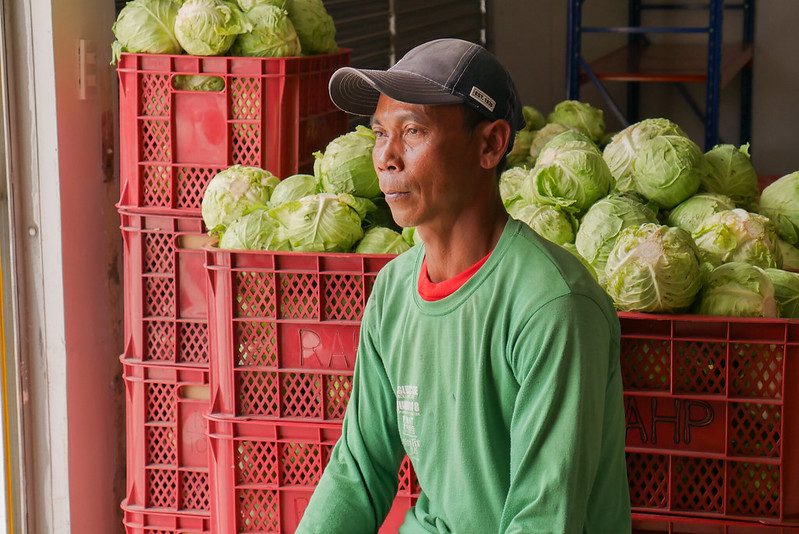
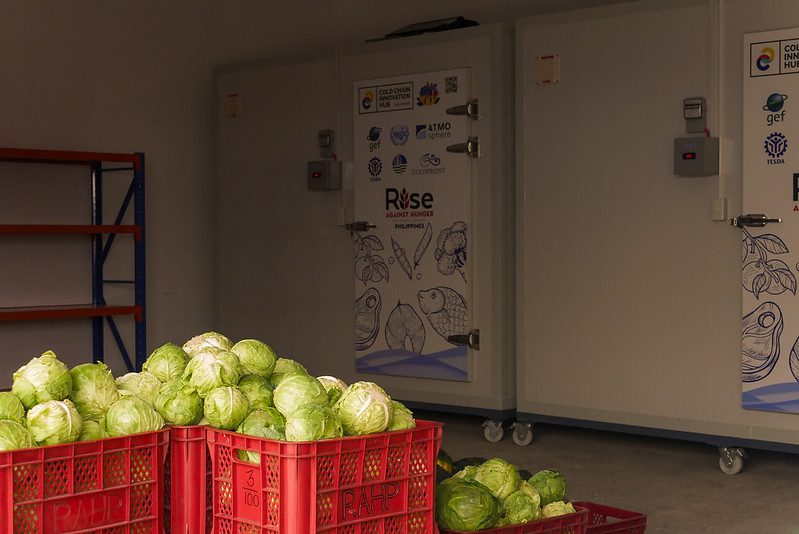
There’s also a lot of hidden food loss that occurs at the farm before it gets to places like NVAT. Melania Runas, a 61-year-old farmer who has been selling at NVAT for decades, says that about 30 percent of her crop does not make it to the agricultural terminal, citing reasons like pest and plant disease, weather impacts, or overripening. Of the 70 percent that she can sell at the terminal, about 40 percent is very good quality and can be sold for premium prices, 15 percent for average prices, and 15 percent for low prices, because they don’t meet cosmetic standards.
Recently, she had a lot of Chinese pechay, or cabbage, that she was not able to sell. “Our heart is crying,” she said. The cabbages were just the right size and the perfect shade of green, but they weren’t completely blemish-free. “We work hard and then we bring the produce to NVAT, and then [if we aren’t able to sell] we throw it away. There are many sacrifices there,” she said. “Or we can bring it to Rise Against Hunger Philippines and barter there. That’s why I’m very thankful for Rise Against Hunger Philippines, because if we cannot sell the pechay for the day, we can bring it to the [food bank].”
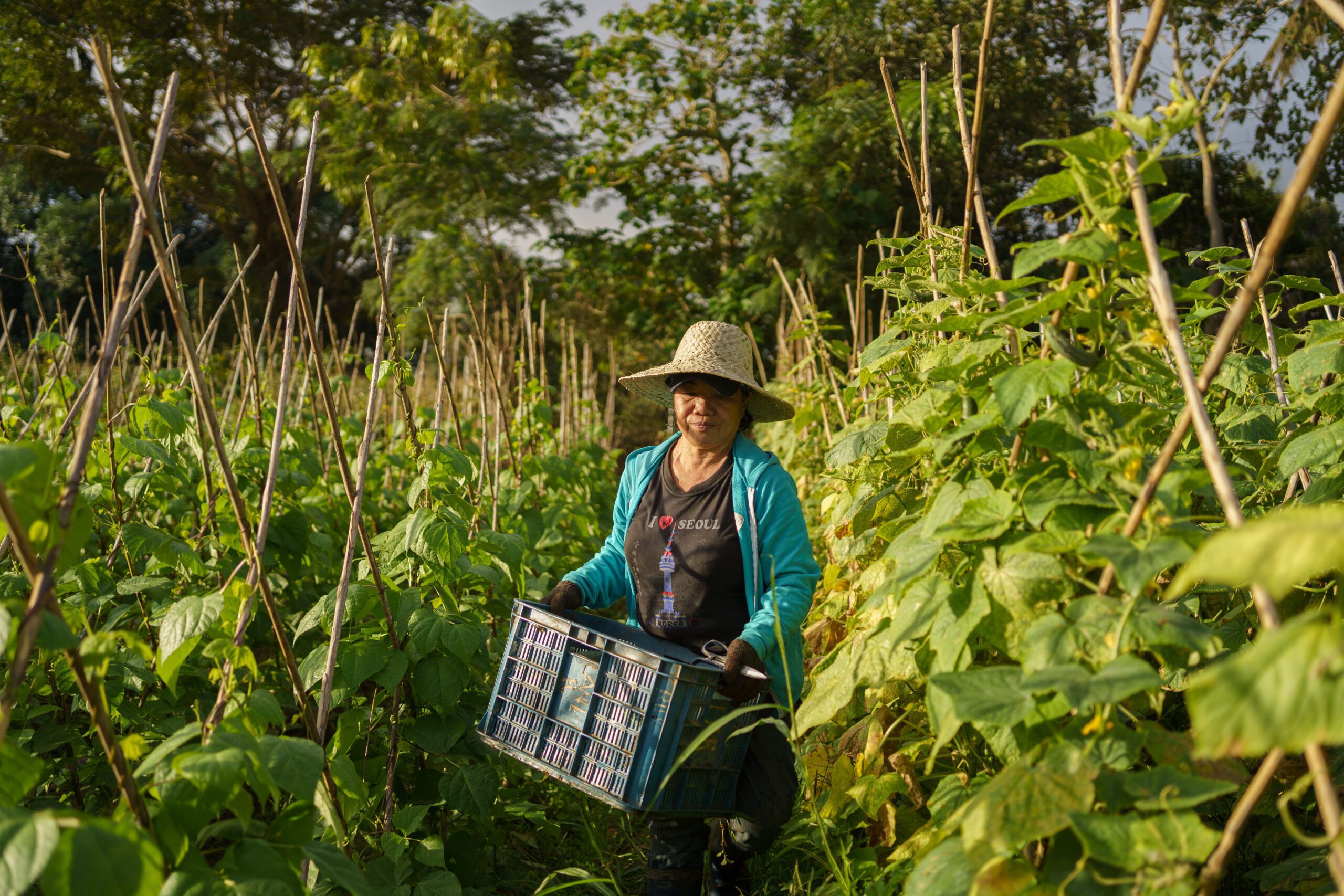
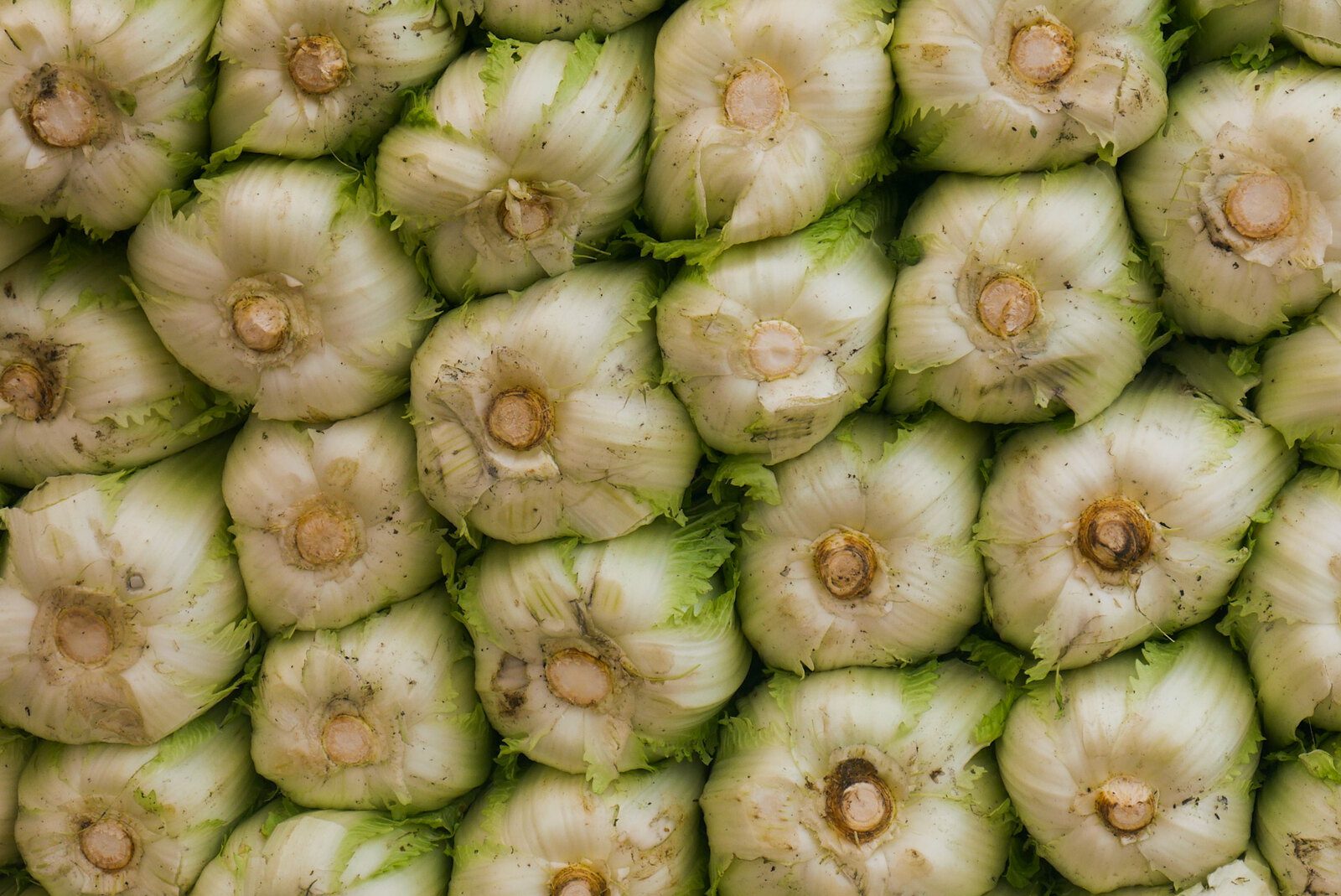
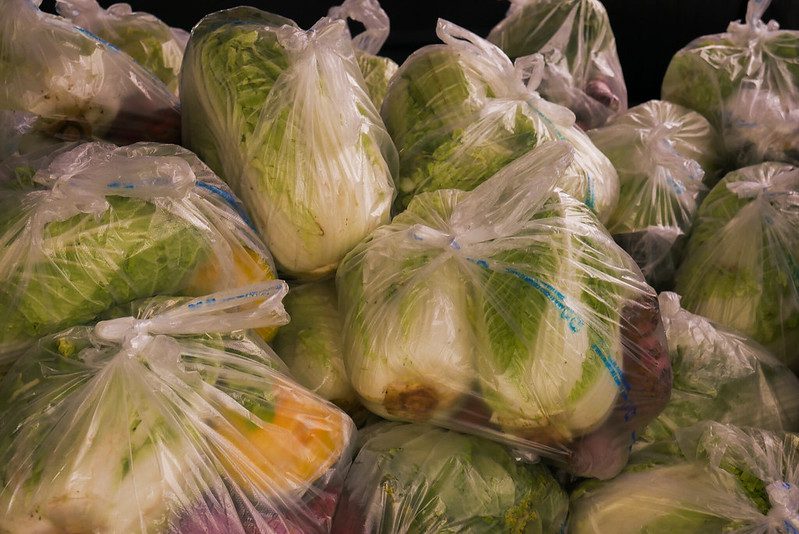
Tucked inside the back corner of the labyrinth that is NVAT, Rise Against Hunger Philippines has piloted a solution to recover the thousands of pounds of surplus food that may go to waste from farmers like Valdez and Runas. In contrast to the rows of incongruous stalls and pathways of the terminal, the food bank, a newly built warehouse with food items and essential supplies arranged neatly atop pristine shelves, turns the heads of curious agricultural workers who zoom by on their motorbikes. It is here that, at any odd hour of the day, farmers with surplus produce can arrive and trade their goods for those of the food bank.
Lauris Anudon manages the food bank at NVAT, overseeing the bartering and trading with farmers. When farmer arrives, Anudon inspects the products and they agree on a value, in pesos per kilogram, usually after a little haggling. After the produce is weighed and a final peso value is determined, the farmer can select from a variety of products — including bags of rice, oil, tinned fish, instant coffee, noodles, and personal care products — that add up to the value of the produce they donated. Farmers walk away with products they would otherwise have to go out and purchase, and then food bank is well stocked with all kinds of fresh produce to distribute to communities that are lacking.
“It’s a fair trade,” said Runas, when asked how she feels about her previous exchanges at the food bank. “Fair trade because it’s a barter system. I bring the Chinese pechay, and they bring me the rice and canned goods.”
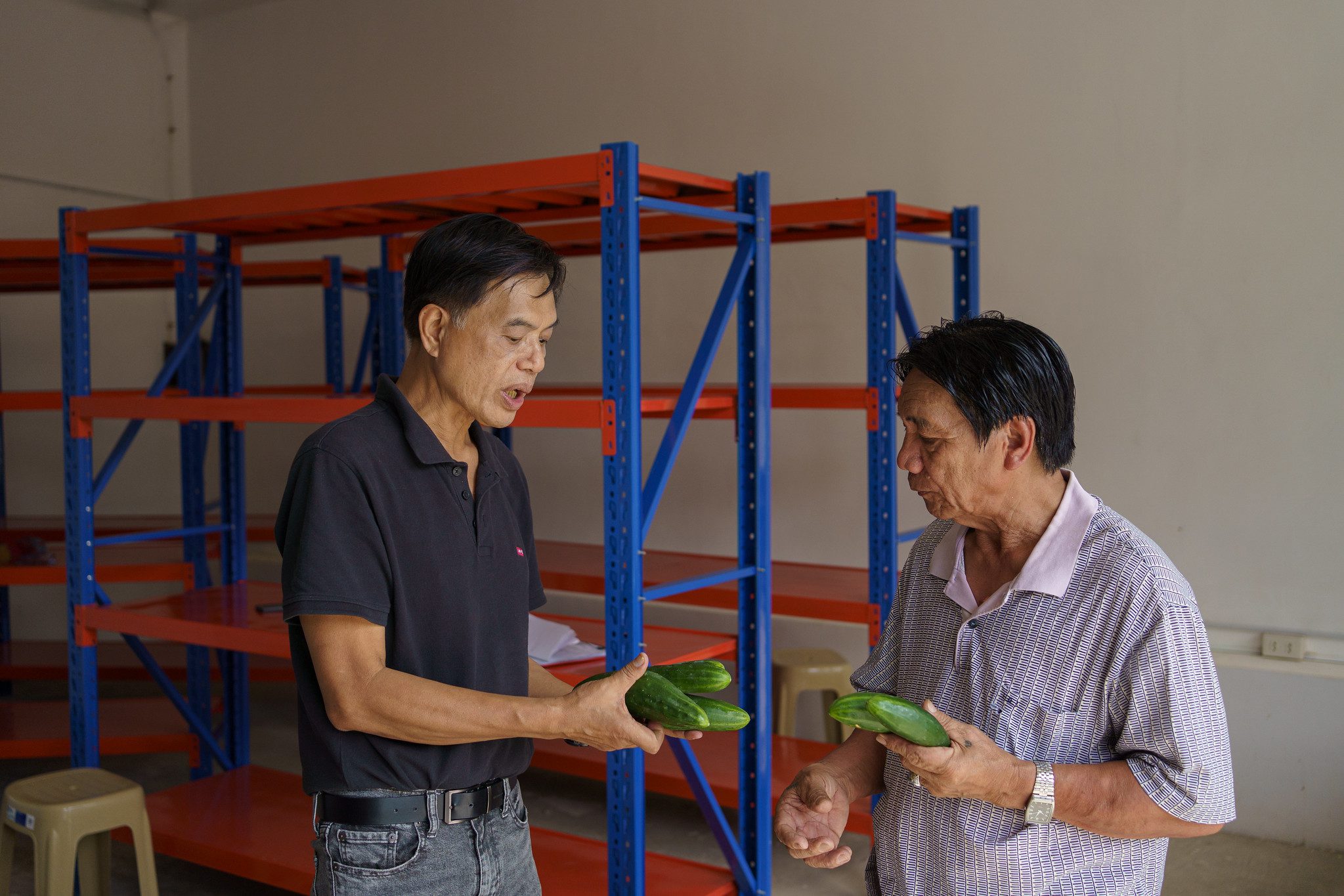
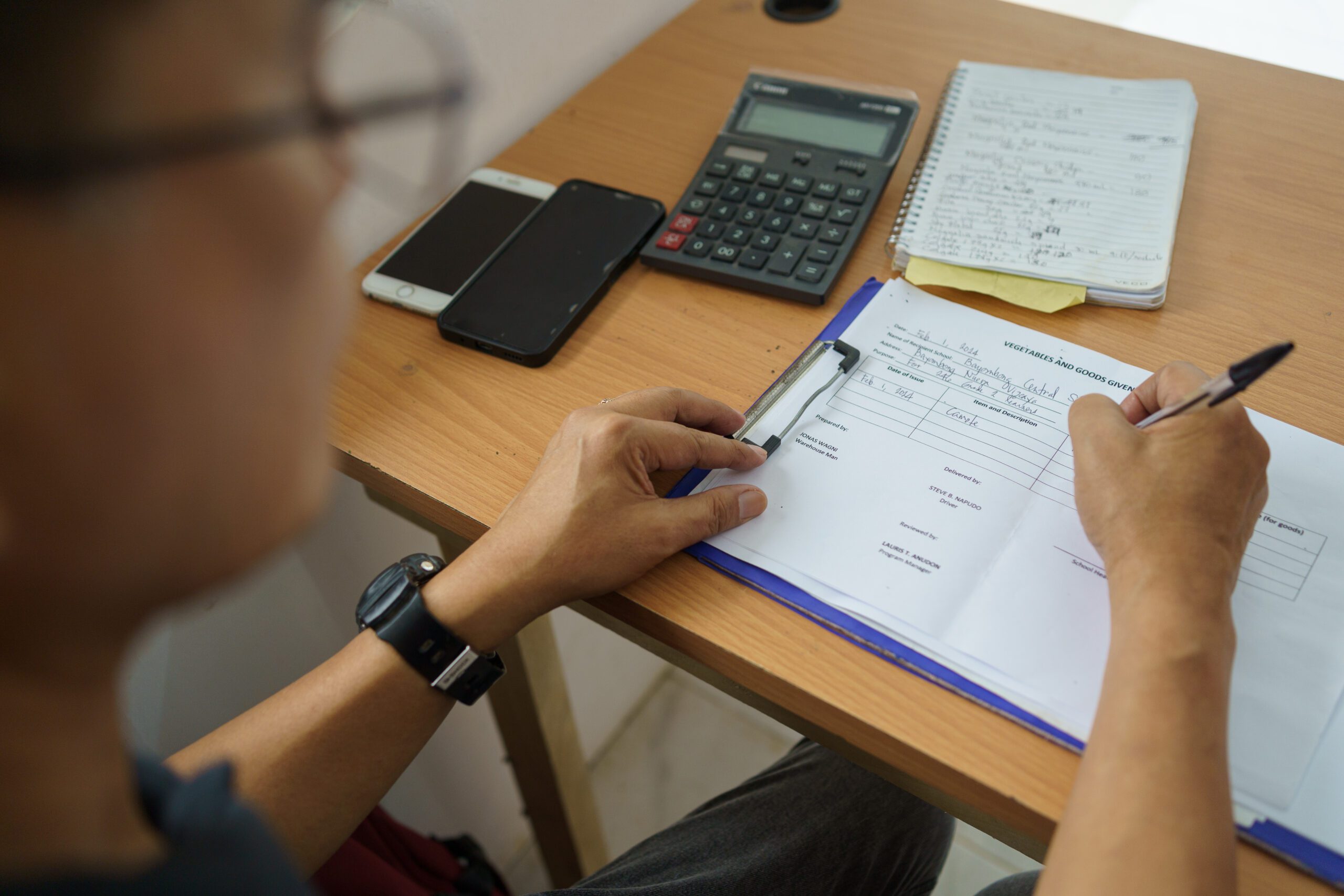
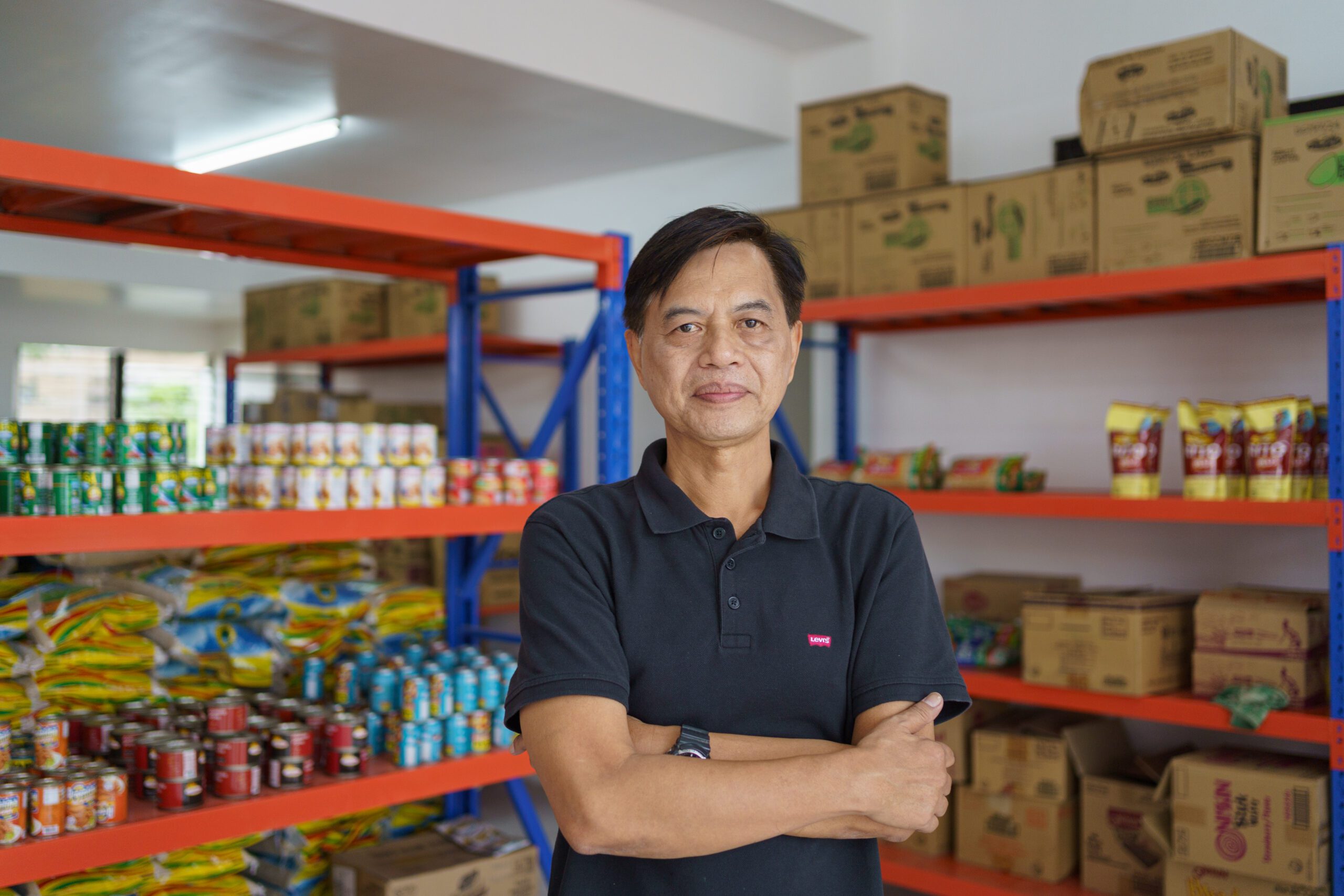
In addition to maintaining the inventory at the warehouse, facilitating transactions with farmers, and conducting outreach about this program to others at NVAT, Anudon is also responsible for getting the produce that the food bank receives to people who could benefit, particularly school-aged children. In the mere 8 months that this program has been running, he’s already developed partnerships with 10 nearby elementary schools around Nueva Vizcaya. Anudon organizes weekly food distributions using the produce from the NVAT food bank, serving students from kindergarten to third grade, where class sizes can be up to three hundred.
“The bartered vegetables are given to the schools to support their school feeding programs,” Anudon explained. “In a way, it’s also an opportunity for the farmers to contribute to [community] development work. They are able to help feed schoolchildren who need to have better food so that they don’t go to their schools on a hungry stomach.”
For Rise Against Hunger Philippines, addressing child hunger is one of their highest organizational priorities. About 3 in 10 children in the country are undernourished, and approximately 95 children die every day due to malnutrition, according to research by UNICEF. So much of the food bank’s programming is focused on providing hot meals to schoolchildren and supporting organizations that run school feeding programs. School feeding programs not only support healthy growth and development at a critical period of life, but they can enhance academic performance, improve attendance, and incentivize children to stay in school long term.
“A sense of fulfillment that I get from this job is, we know that our school children are eating better food,” said Anudon, reflecting on all the logistics, coordination, and partnerships needed to make this work happen. “And I feel happy because we’re helping the farmers.”
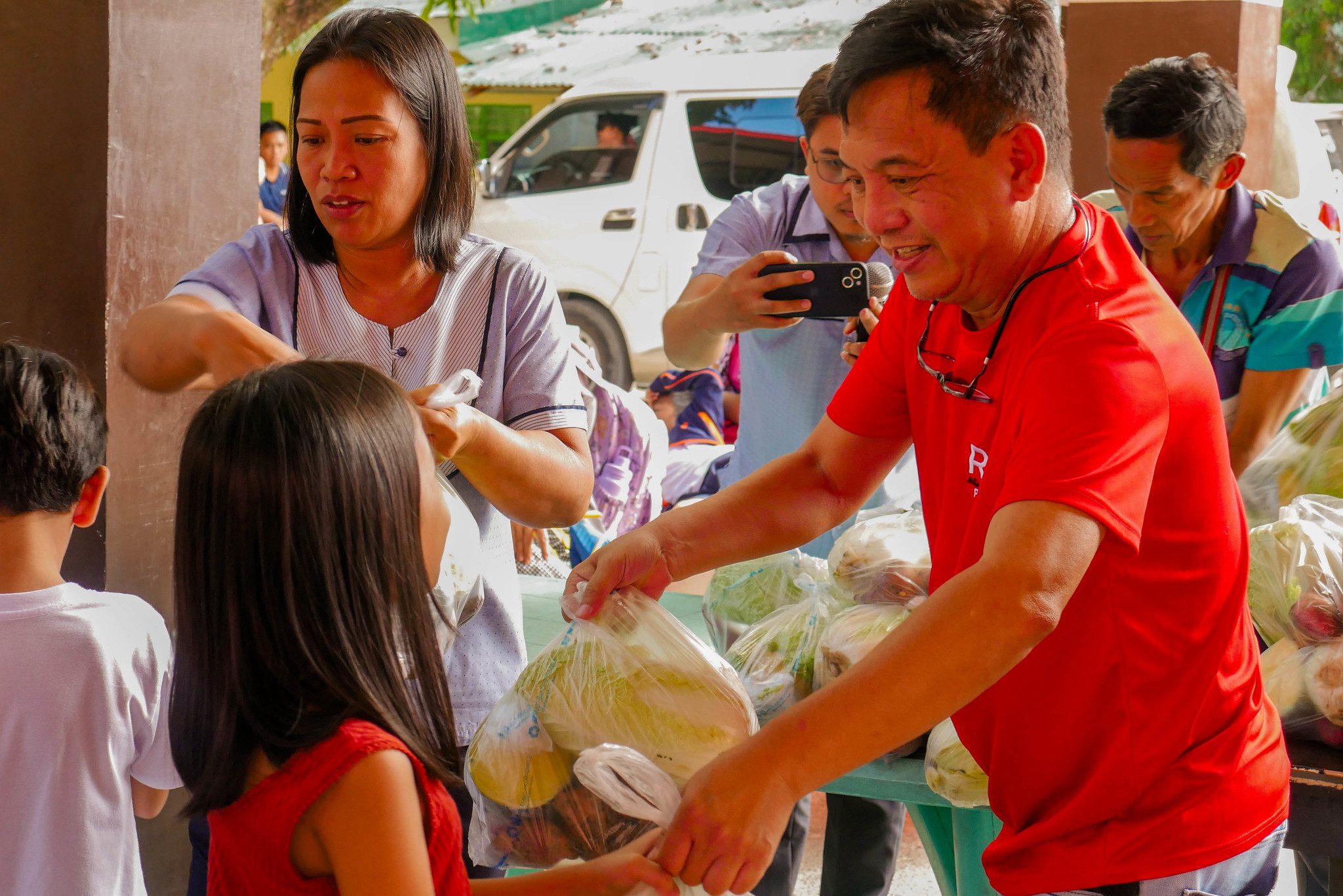
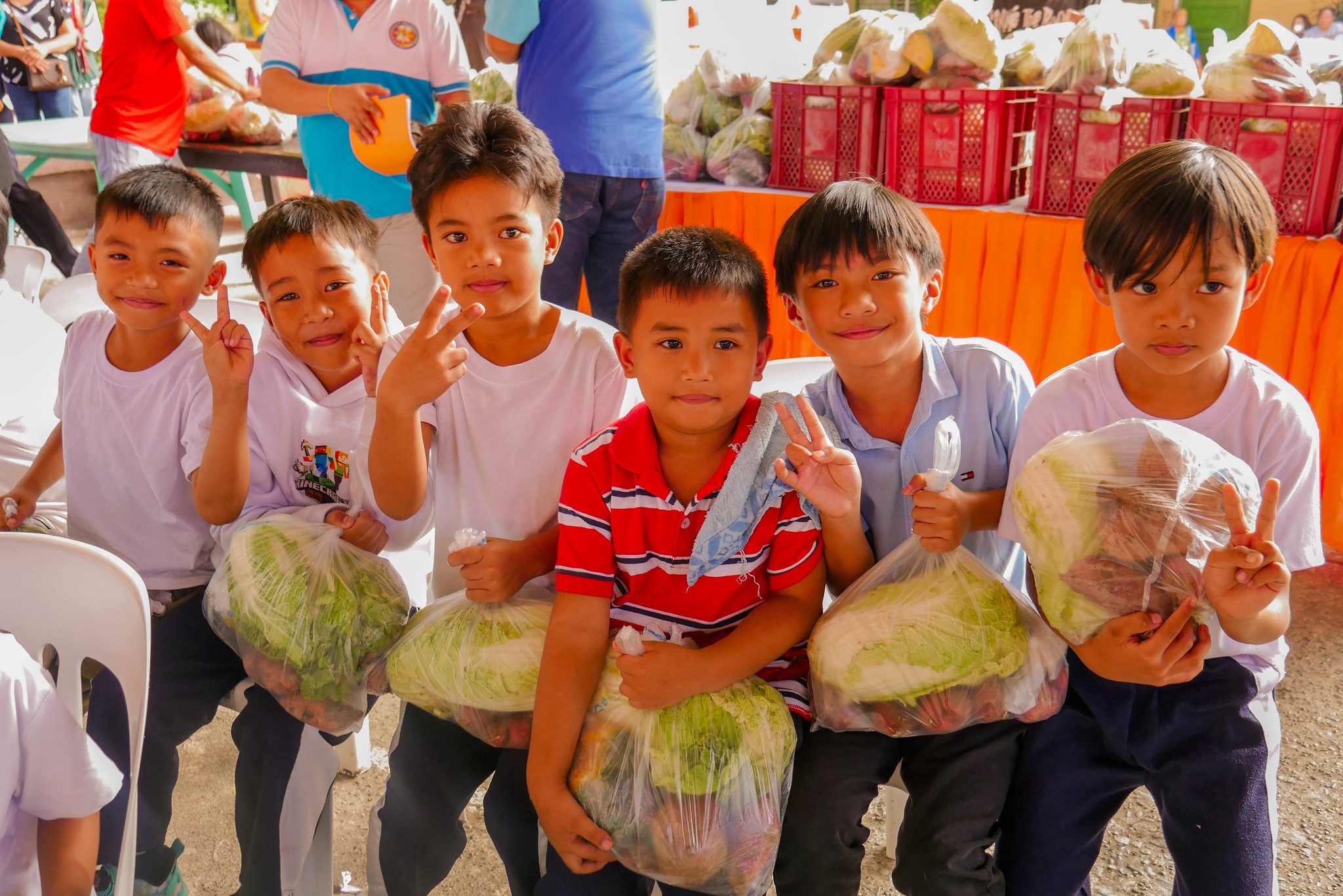
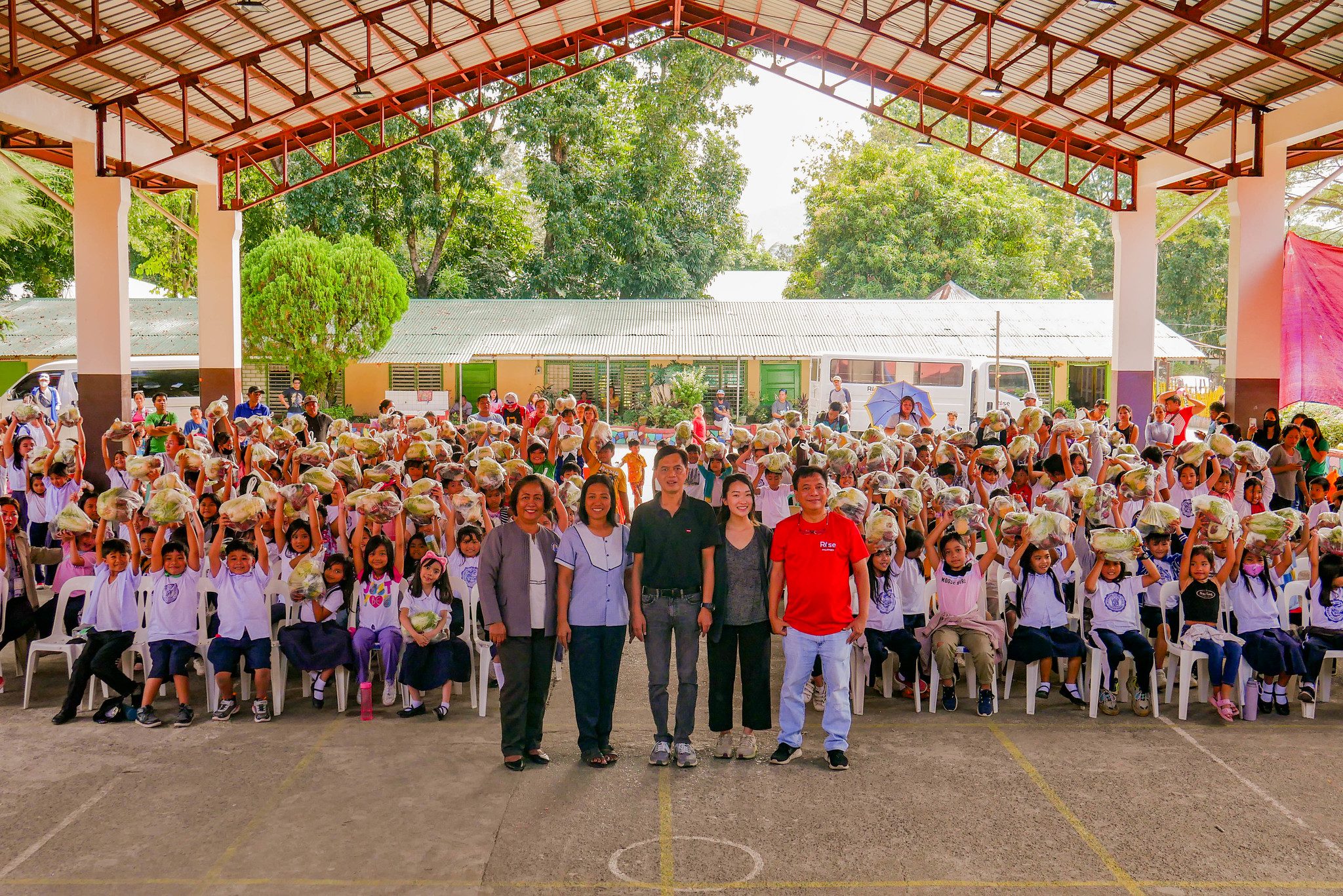
Soon, the establishment of the food bank at the Nueva Vizcaya Agricultural Terminal will be approaching its one-year anniversary. Since receiving the grant funding that kickstarted this project from The Rockefeller Foundation and The Global FoodBanking Network, they’ve already made a considerable impact in the community. And they’re just getting started.
“The ultimate goal of this agriculture recovery program is to reduce food waste, post-harvest losses, and in turn, donate those recovered vegetables to school programs where children are provided with fresh vegetables to bring home … and to reach the thousand farmers who are currently trading at NVAT,” said Jomar Fleras, executive director of Rise Against Hunger Philippines. He founded the organization in 2015 and is one of the masterminds behind the food bank’s innovative endeavors. “NVAT is the largest trading post in in the country, but there are several trading posts all over Luzon and other parts of the Philippines. I’m sure there’s a lot of food that can be recovered there. What we hope to do is to create a model that can be scaled up and replicated in these various trading posts.
“A whole community is being helped through this program,” Fleras continued, looking off in the distance toward the food bank, as Anudon receives another exchange of fresh vegetables from a farmer.
“I always tell people it takes a village to feed a child. And this is the village that we have created here in Nueva Vizcaya.”
